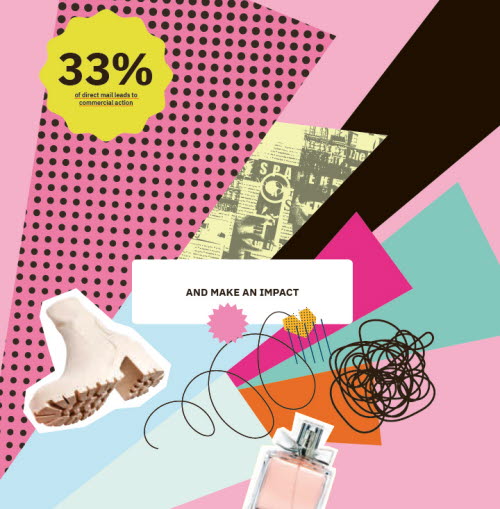Despite the fact that general ad spend slowed down during the pandemic, print is now recovering. Advertisers are realising some of the tactile opportunities of print that digital channels simply cannot achieve. “The ability to engage with brands with print is really unique. That does not only apply to a world where physical experiences were restricted,” says Tim Bond, director of insight at the Data and Marketing Association (DMA), a UK trade organisation representing brands, agencies and technology providers.
Overall engagement with mail has increased
A study carried out by JICMAIL, the UK organisation that provides performance data for mail, backs this up. It found that overall engagement and interaction with mail has increased, with door drops far more likely to be read and kept in the home. “The reach of physical mail is underestimated. And a piece of mail has a long lifecycle. People tend to put it on a pile and deal with it later or pass it on. They’re potential mini billboards in people’s homes.”
Some data from the findings of WARC 2021:
- 33% of direct mail leads to commercial action
-
Direct mail is 35% more memorable compared to social media campaigns
- Personalised DMs are read 4.5 times on average
Academic studies map the impact
One of the first academic studies to map the impact of print and digital advertising was made by Vinod Venkatraman,associate professor in marketing and director of the Center for Applied Research in Decision Making at the Fox School of Business,
Temple University in Philadelphia.
"OIG was open to the idea that we may come back and tell them print media was no longer effective and they may have to revaluate their business."
He conducted a project with the Advertising Research Foundation to measure how different neurophysiological methods can be used to measure advertising effectiveness. The results generated a great deal of attention. The US Postal Service Office of Inspector General (OIG) also reached out, wanting to find out how effective print advertising was. “Being an academic institution, we had a lot of freedom. OIG was open to the idea that we may come back and tell them print media was no longer effective and they may have to revaluate their business,” Venkatraman says.
The study included multiple sessions where participants were exposed to physical and digital ads. They measured things like heart rate, eye tracking, brain activity and skin response, linking consumers’ subconscious responses to three buying process phases – exposure, memory and action. Results showed that physical ads created stronger memory associations, sparked desirability and led to higher subjective value for advertised products. Digital ads, meanwhile, captured subjects’ attention quicker.
Longer lasting impact
Though slower to get one’s attention at first exposure, the study showed that physical ads leave a longer lasting impact for easy recall when making a purchase decision. “Once print gets your attention, people will process the information better and form associations with the brand,” Venkatraman says.
"We showed that if you have a complex message, or if you are trying to rebrand and develop a new message associated with the product or brand, there is huge value in retaining print as part of the marketing mix."
Advertisers should consider things like attractive colours, thicker pieces of paper and varying textures, to facilitate the initial capture of attention, he suggests. In general, Venkatraman sees a bright future for print. “It’s clear that brands focus a lot of effort on social media where a lot of people spend their time,” he says. “But consistently in multiple studies, we showed that if you have a complex message, or if you are trying to rebrand and develop a new message associated with the product or brand, there is huge value in retaining print as part of the marketing mix. Our results show that print has to be part of a broader marketing strategy.”

The text is an excerpt from the article Reach out, written by Jonna Dagliden Hunt, featured in PAPER #4. Illustrations by OTW.

